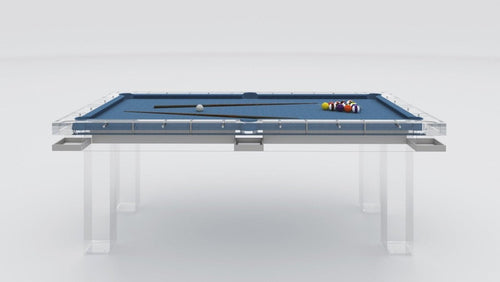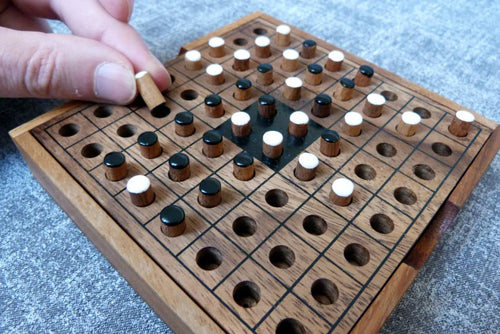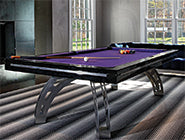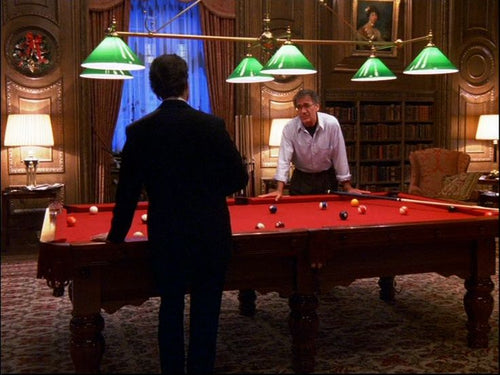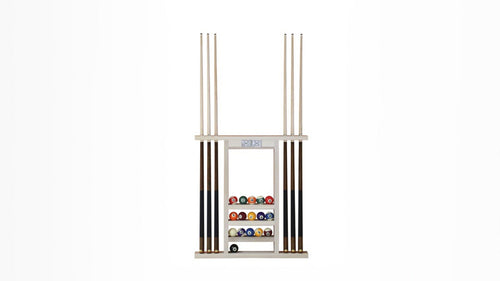Enjoy our modern designs
Estimated Read Time: 5 mins |
Table tennis doubles adds a layered, strategic twist to the sport, setting itself apart from singles with unique rules, dynamic movement, and deep teamwork. While core skills like spin, timing, and precision still matter, success in doubles depends equally on coordination, positioning, and tactical harmony.
Essential Rules of Doubles Play
- A white center line divides the table into right and left half-courts.
- Players must alternate shots—each partner strikes every other ball.
- Para events may allow non-alternating shots if a player is in a wheelchair.
- Serves must be delivered diagonally from the right-hand side to the opponent’s right court; center line bounces count as valid.
- A fault is called if the striking sequence is broken.
- Service rotates every five points, and each player always hits to and from the same opponent within a game.
- Between games, server and receiver roles rotate, with the sequence reversing after each set.
- In deciding games, receiving order changes once one side reaches ten points.
Teamwork and Partner Coordination

- Mutual accountability: Partners recognize their roles in errors and adapt.
- Active communication: Discussing strategies and mindset mid-game is common.
- Complementary playing styles: A consistent setup player pairs well with a finisher.
- Balanced handedness: Left- and right-handed pairings maximize court coverage.
- Chemistry, trust, and rhythm often outweigh raw talent or individual skill.
How to Choose a Doubles Partner
- Left-right hand mix: Ideal for maximizing forehand use and avoiding footwork overlap.
- Contrasting distance styles: One close-to-table, one mid-distance creates fluid rotations.
- Forehand/backhand dominance balance: Prevents positional clashes and enhances recovery.
- Pairs that understand each other’s tendencies often outperform mismatched but more skilled duos.
Shot Planning and Tactical Systems
In doubles, your shot should set up your partner—not yourself:
- Defensive players thrive on setups like long pushes or high spin returns.
- Attackers benefit from softer, higher balls that invite aggressive strokes.
- Using a unified system (e.g., attacker-attacker) can help, but adaptability is critical.
Footwork and Movement Strategies
Mobility and coordination take center stage:
- Serves and returns play a pivotal role in shaping the point.
- After hitting, players have more time to reposition—but only if they exit cleanly.
- Efficient lateral or backward movement clears space for the partner.
Common Movement Patterns
- In and Out: Ideal for left-right or forehand/backhand dominant combos.
- Circle: For same-handed pairs sharing preferred zones.
- T-Movement: Works when one player stays close and the other plays from mid-distance.
- 8-Movement: Used to reset after one player is pulled wide, looping behind the other.
Serving and Receiving in Doubles
Service Tactics
- Half-long serves are hardest to attack or return short.
- All serves must follow the diagonal rule, reducing variation.
- No-spin serves confuse opponents by eliminating rotation cues.
- Partners often use non-verbal signals to coordinate serve plans.
Receiving Strategies
- Returns should neutralize pressure while positioning the partner for an advantage.
- Understanding scattering angles helps maintain rhythm and spacing.
Advanced Doubles Tactics
- Slow, strategic shots with precise placement are often more effective.
- Targeting the opponent’s wide forehand can break their formation.
- Always consider your partner’s next move—don’t force difficult recoveries.
- Use repeat placements to stress your opponents' positioning.
- Prioritize parallel play to maintain rhythm and reduce movement errors.
When tactics conflict—playing to a partner’s strength vs. exploiting a weakness—base the decision on match flow. Under pressure, go for the kill. In control, support your teammate.
Final Thoughts
Table tennis doubles transforms the game into a coordinated, fast-paced chess match. It’s not just about hitting the ball well—it’s about synchronizing movement, anticipating your partner’s needs, and executing a shared vision. Mastering doubles means embracing strategy, trust, and fluid teamwork in equal measure.



